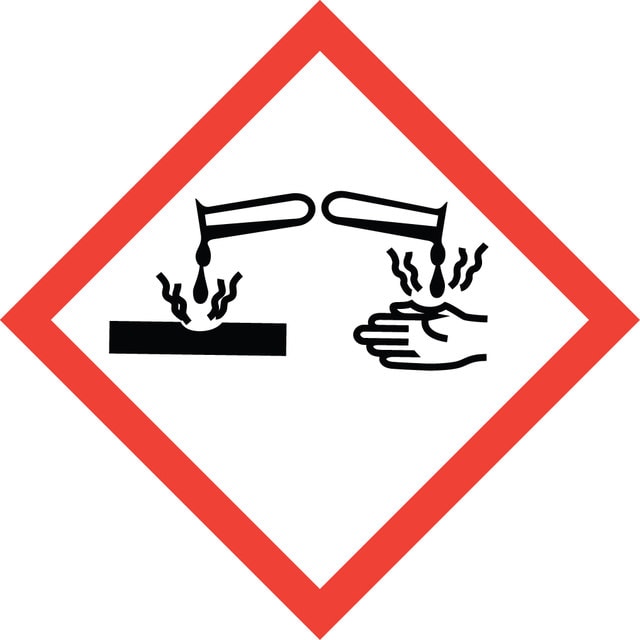Select a Size
About This Item
form
powder or crystals
Quality Level
technique(s)
titration: suitable
pH
10 (20 °C, 10 g/L)
solubility
methanol: 0.01 g/10 mL, red
εmax
≥1000 at 525-535 nm in 50% ethanol
suitability
suitable for microscopy
application(s)
diagnostic assay manufacturing
hematology
histology
microbiology
storage temp.
room temp
SMILES string
[Cl-].Cc1cc2nc3cc(C)c(N)cc3[n+](-c4ccccc4)c2cc1N
InChI
1S/C20H18N4.ClH/c1-12-8-17-19(10-15(12)21)24(14-6-4-3-5-7-14)20-11-16(22)13(2)9-18(20)23-17;/h3-11H,1-2H3,(H3,21,22);1H
InChI key
OARRHUQTFTUEOS-UHFFFAOYSA-N
Looking for similar products? Visit Product Comparison Guide
Related Categories
General description
Application
- It is used for human-medical cell diagnosis and serves the purpose of the bacteriological investigation of sample material of human origin.
- It is used to prepare a staining solution, that when used together with other in vitro diagnostic products from our portfolio dyes target structures (e. g. Gram-positive or Gram-negative bacteria, by fixing, where necessary embedding, staining, counterstaining, mounting) in bacteriological specimen materials (for example: smears of bacteriological material that have been air-dried and heat-fixed like sputum, smears from fine needle aspiration biopsies (FNAB), rinses, imprints, effusions, pus, exsudates, liquid and solid cultures), for diagnostic evaluations.
- It is used to demonstrate glycosaminoglycans in human and animal histological specimens and nuclei.
- It is a component of Benda′s polychrome stain.
- It is a component of various polychromes and lignin stains for botanical staining applications.
- It has also been applied for the demonstration of mast cells in cytospin preparations and staining surgical frozen sections.
Biochem/physiol Actions
Features and Benefits
- Color stable
- Reproducible
- Offers sufficient sensitivity to reveal all structural details
Signal Word
Danger
Hazard Statements
Precautionary Statements
Hazard Classifications
Eye Dam. 1
Storage Class Code
11 - Combustible Solids
WGK
WGK 3
Personal Protective Equipment
Choose from one of the most recent versions:
Already Own This Product?
Find documentation for the products that you have recently purchased in the Document Library.
Our team of scientists has experience in all areas of research including Life Science, Material Science, Chemical Synthesis, Chromatography, Analytical and many others.
Contact Technical Service